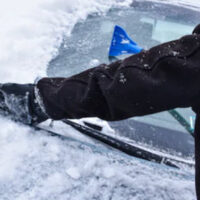How Quickly Must a Property Owner Remove Snow or Ice Before It Injures Someone?

Property owners have a general duty to keep their premises in reasonably safe condition for invited guests. This duty can prove quite complicated when it comes to an ongoing potential hazard, such as a winter storm. Legally speaking, a property owner is not required to “continuously remove snow and ice” while a storm is ongoing. But if the owner fails to remove any snow or ice within a “reasonable time” after the storm has passed, then they can be held liable if someone is injured.
Judge Allows Slip-and-Fall Case Against Clarksville Facility to Proceed
Of course, what constitutes a “reasonable time” will depend on the facts of each specific case. But a recent ruling from a federal judge in Nashville provides some guidance on how courts apply these principles. This decision comes from an ongoing lawsuit, Brown v. Holiday AL Management Sub LLC, which involves a slip-and-fall accident.
The defendant operates an independent living facility in Clarksville. The plaintiff provided health care services to a resident of the facility. One evening, as the plaintiff entered the facility to begin her shift, she slipped and fell on a patch of black ice.
The plaintiff subsequently filed a personal injury lawsuit against the defendant. The defense moved for summary judgment. Essentially, the defendant argued that at the time of the plaintiff’s accident there was an ongoing storm, and therefore it could not be held liable for failing to clean up the black ice right away.
The judge denied the defense’s motion, however, citing a “genuine dispute of fact as to whether the accumulation was recent and/or continuous at the time of her fall.” As the judge explained, the plaintiff’s accident occurred at 6:15 p.m. on February 18, 2015. There had been a “multi-day, major storm” in Clarksville, which began two days earlier, on February 16. The National Oceanic and Atmospheric Administration (NOAA) recorded approximately six inches of combined snow-and-ice accumulation on February 16 and 17.
But it was not clear to the judge, based on the conflicting evidence presented, how much additional accumulation occurred on February 18 or when that accumulation actually stopped. The plaintiff produced a weather report that said the accumulation ended around 6 a.m. on that day–roughly 12 hours before the accident. The defendant, in contrast, pointed to testimony from one of its own managers, who insisted “the storm was continuing on February 18” and that there had been “significant accumulation” that afternoon. Ultimately, the judge decided it was best to let a jury sort things out.
Speak with a Tennessee Personal Injury Attorney Today
Personal injury lawsuits often turn on very specific factual issues. And you should not assume that your own version of those facts will go uncontested by the defense. That is why it is important to work with a qualified Nashville personal injury lawyer who can provide you with representation throughout the litigation process. If you have been injured in an accident and need legal advice, contact Fox, Farley, Willis & Burnette, today to schedule a free consultation.
Source:
scholar.google.com/scholar_case?case=11174715339311200823
/when-can-you-pierce-the-corporate-veil-and-hold-a-corporate-owner-personally-liable-for-negligence/
